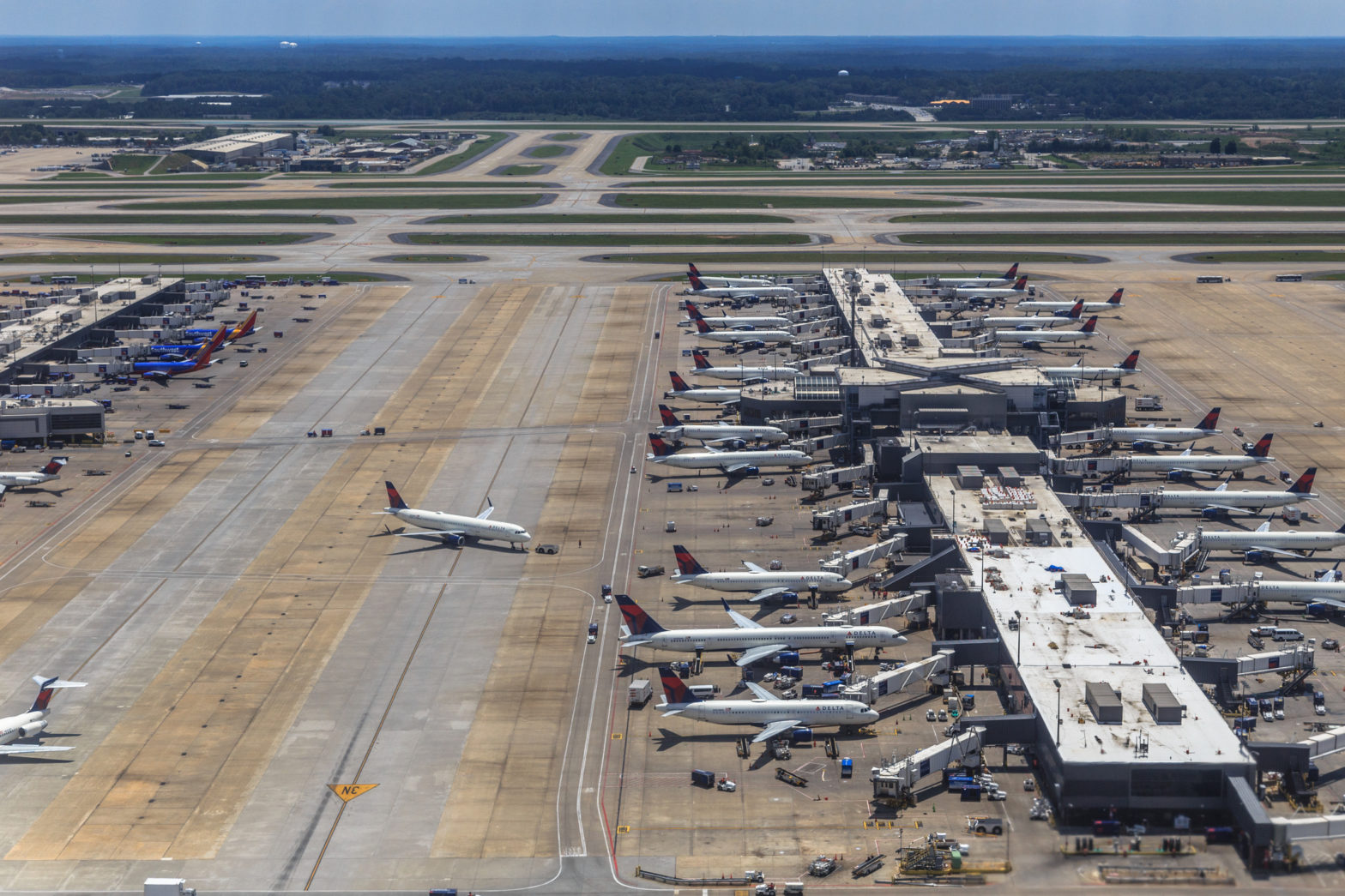
Atlanta airport expands AI capabilities with second phase rollout
02 March 2025
by Jonathan Andrews
Atlanta Hartsfield-Jackson International Airport (ATL) has entered Phase 2 of its artificial intelligence (AI) roadmap, advancing from foundational data governance to predictive analytics and machine learning applications.
ATL’s Interim Chief Data Officer, Jon Pruitt, shares his insights with Cities Today about the airport’s AI strategy and next steps.
Expanding AI capabilities
With the groundwork laid in Phase 1, ATL is now leveraging AI for operational forecasting and enhanced passenger experiences which will continue until May.

“Phase 1 was just to give those metrics to the GM Dashboard, which provides real-time operational insights to the General Manager. Now we’re looking at forecasting perspectives,” Pruitt says.
The new phase includes tracking passenger flow through security checkpoints and analysing retail activity across terminals. One major initiative involves developing an internal chatbot powered by large language models.
“We’re expanding our data lake now and getting into that digital transformation space to be AI-ready,” Pruitt notes. By building robust data pipelines and leveraging AI, ATL aims to improve operational efficiency and generate new revenue opportunities.
Laying the foundations
ATL’s AI journey began with establishing governance and foundational data practices. Assembling the right team was critical.
“We established a committee of over 50 data stewards and professionals… to foster the data governance that we were trying to exhibit,” Pruitt explains.
These data stewards were selected from across six operational pillars, ensuring domain expertise in each area. A key early step was ATL’s AI readiness assessment, conducted with Quisitive. The comprehensive evaluation highlighted critical gaps, particularly in data governance and quality.
“The main gap was from the data quality and governance… we had a lot of disparate data sources,” Pruitt notes. “We did not have a centralised repository, so the quality of the data was compromised.”
Inconsistent data handling–ranging from direct API extractions to manual Excel modifications–led to discrepancies and inefficiencies. To address these gaps, ATL developed a Data Steering Committee, aligning key performance indicators (KPIs) and ensuring a single source of truth in a centralised data lake. This governance framework set the stage for scalable AI adoption.
The GM Dashboard proof of concept
One of the most tangible outcomes of ATL’s foundational work was the GM Dashboard proof of concept (POC), which integrated 11 disparate data sources into a unified visualisation tool. The dashboard provides the airport with real-time metrics, improving decision-making efficiency.
“The biggest challenge… was trying to get everybody in the room at the same time,” Pruitt acknowledges. “But also tracking down APIs—if they existed—and working with vendors to ensure access.”
Since deploying the dashboard, the operations GM has experienced an 80 percent reduction in time to insight–from 30 minutes down to just five minutes–enabling quicker problem resolution and more opportunities to enhance operational efficiency.
Why Databricks?
With a structured governance approach in place, ATL turned to technology selection. The Databricks Lakehouse platform emerged as the preferred choice, largely due to its scalability and cost-effectiveness.
“Being cloud agnostic was important to us,” Pruitt explains. “We have a hybrid cloud infrastructure here… and from a scalability and high-performance computing standpoint, the price was the main factor.”
Like many large enterprises, the airport has adopted a multi-cloud strategy, leveraging Microsoft Azure as its primary cloud while also utilising AWS and Google Cloud for specific workloads.
Validation from industry analysts such as Gartner, as well as successful implementations at other aviation organisations, reinforced confidence in the platform. This decision positioned ATL to advance from data aggregation to predictive analytics and machine learning in subsequent phases.
Balancing short-term gains with long-term AI vision
While immediate wins like the GM Dashboard validate ATL’s AI strategy, Pruitt emphasises the importance of long-term sustainability.
“The long-term perspective is to be more efficient and figure out how we can generate non-aeronautical revenue streams based on these data sources,” he says.
Maintaining AI momentum requires continuous learning and adaptation. ATL stays ahead by engaging with government agencies such as the TSA and FAA, participating in industry conferences–such as the Airports AI Alliance–, and leveraging insights from external partners like Databricks.
“Information sharing across agencies is how we’re keeping up with the latest trends,” Pruitt explains.
Key takeaways for other airports
For airports looking to embark on their own AI transformation, Pruitt offers practical advice:
- Conduct a data assessment first – “Without the foundation, you don’t know where you’re going,” Pruitt says. Establishing data quality and governance early prevents inefficiencies down the line.
- Build a dedicated AI governance team – Having data stewards from different operational areas ensures expertise and buy-in across the organisation.
- Centralise data for scalability – “Now that we have a centralised repository, we can be more innovative,” he emphasises. Consolidating data sources enables efficient AI deployment.
- Prioritise use case development – Proving value through small-scale projects like the GM Dashboard helps secure long-term support for AI initiatives.
- Plan for the long-term – AI should align with strategic goals, ensuring sustained operational improvements and potential new revenue streams.
The road ahead
As AI continues to transform airport operations, Pruitt’s insights underscore a key lesson: success hinges not just on technology, but on governance, collaboration, and a clear strategic vision.
“AI is not going to take over jobs,” says Pruitt. “It’s going to need some human interaction. It’s just going to make us more efficient.”
For more information about the Airports AI Alliance and how to get involved, visit: www.airportsalliance.ai.
Image: Redwood8 | Dreamstime.com








